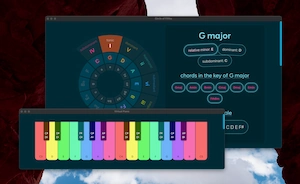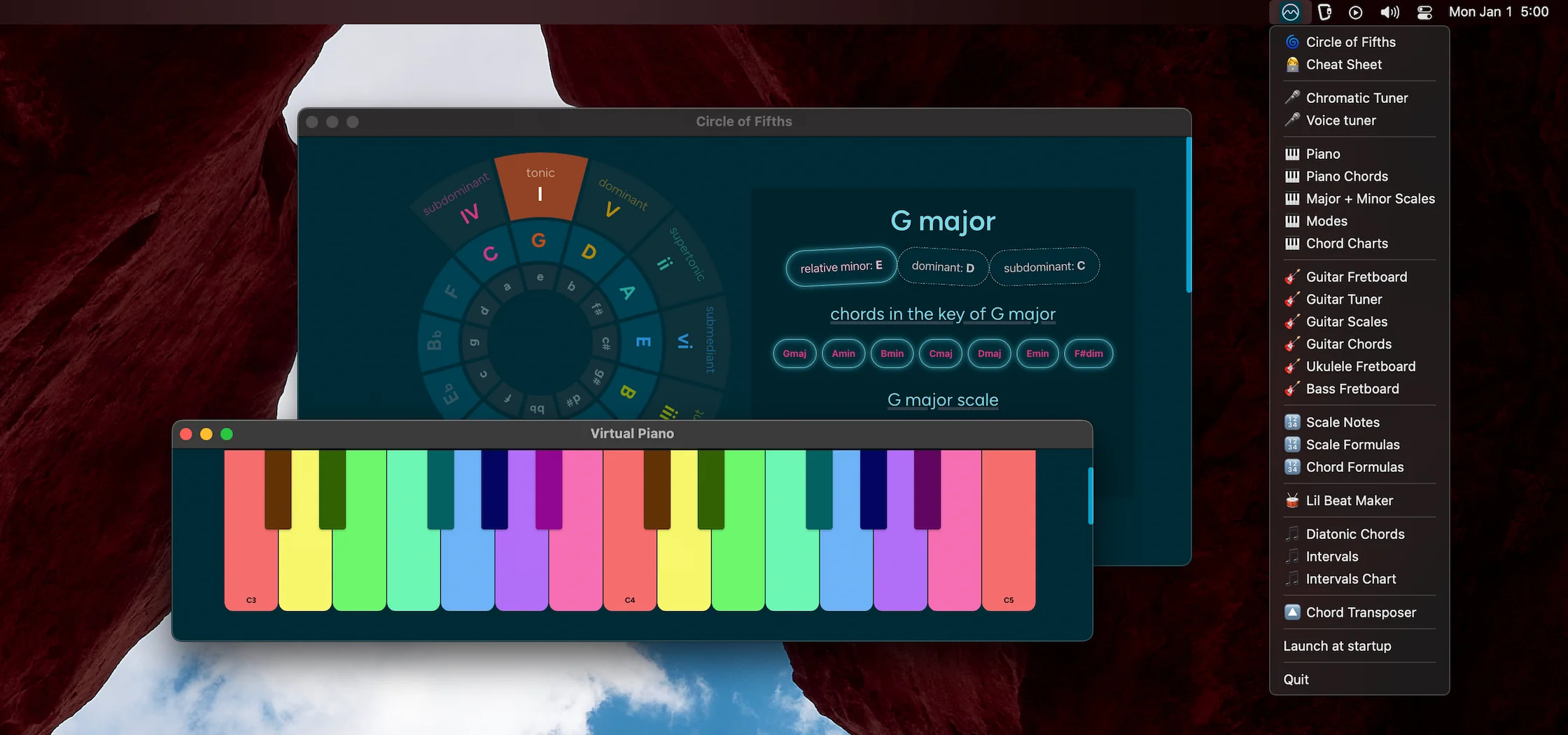Cadence in Music: Authentic, Deceptive, Plagal & Half Cadence
In music, cadence is a word used to mean the last two chords
of a musical phrase which create some kind of resolution in that part of a
piece of music.
There are 4 main types of cadences:
authentic cadence,
deceptive cadence,
half cadence and
plagal cadence. In turn, the authentic cadence
is subdivided in two: the perfect authentic cadence (PAC) and the imperfect
authentic cadence (IAC).
On this page you'll get a brief explanation of each type of musical cadence
along with an interactive way to hear the sound of these cadences on the
piano.
Chords in Keys is a good companion tool to
reference the diatonic chords of each key along with their roman numeral
notation.
Authentic Cadence
Authentic cadences move from the V chord, aka the dominant chord, or from the dominant seventh chord (V7) to the I chord, the tonic chord, or the i chord in a minor key. Authentic cadences create the strongest sense of resolution in a musical phrase. They are like a period at the end of a sentence.
There are two types of authentic cadences, the perfect authentic cadence and the imperfect authentic cadence:
Perfect Authentic Cadence (PAC)
A perfect authentic cadence is an authentic cadence where both the V chord and the I chord are in root position and where the tonic note of the scale is the highest note of the I chord.
That means that the root note of both chords is in the bass and the tonic note of the scale is in the melody on the I chord.
Listen to a perfect authentic cadence as part of a chord progression in the key of ↓
Imperfect Authentic Cadence (IAC)
With the imperfect authentic cadence, the chords don't need to be in their root position and the tonic doesn't need to be the highest note on the I chord .
The imperfect authentic cadence offer a strong resolution, but not as strong as the perfect authentic cadence. Here you can play an imperfect authentic cadence where both the V chord and the I chord are in second inversion:
Listen to an imperfect authentic cadence example as part of a chord progression in the key of ↓
Deceptive Cadence
The deceptive cadence, also called the interrupted cadence, is the V chord (the dominant chord) followed by another chord that's not the tonic, often the vi chord. That vi works well because it shares two notes in common with the I chord.
It's called the deceptive cadence because we're expecting the tonic chord after the dominant chord, but instead we get another chord. This cadence gives us a weak sense of resolution and is usually used to then continue the chord progression further. It's a bit like a coma in a sentence, it leaves us expecting more.
Deceptive Cadence Example
Listen to a deceptive cadence as part of a chord progression in the key of ↓
Half Cadence
The half cadence, also sometimes called the imperfect cadence, is a cadence that ends on the V chord. The half cadence leaves us with a weak sense of resolution.
Half Cadence Example
Listen to a half cadence as part of a chord progression in the key of ↓
Plagal Cadence
We have plagal cadence, also known at the Amen cadence, when we have a musical phrase that ends with the IV and I chords, or the iv and i chords in the case of a minor key.
Plagal Cadence Example
Listen to a plagal cadence as part of a chord progression in the key of ↓
To learn more about cadence as a music theory concept, check out the Wikipedia article, which goes in length about the different types of cadences. Or, have a listen to this excellent episode from the Music Student 101 podcast.



